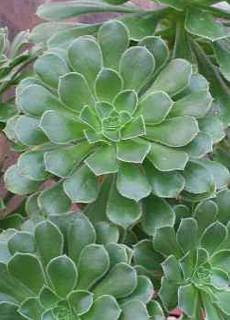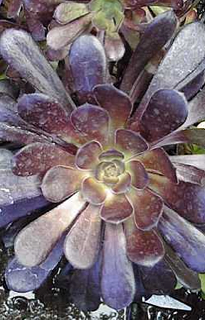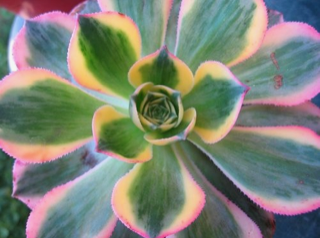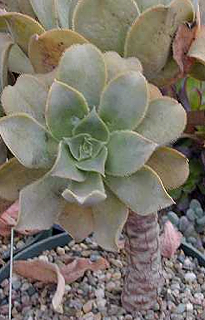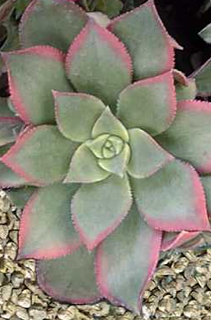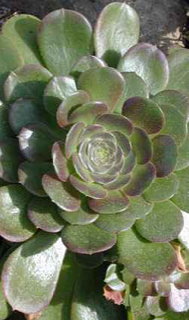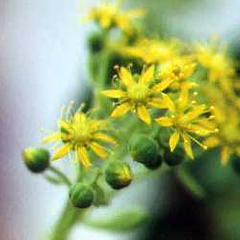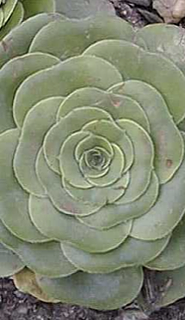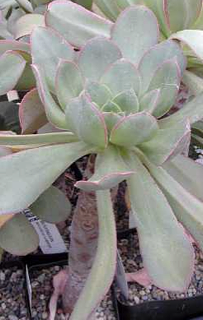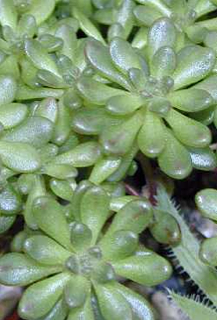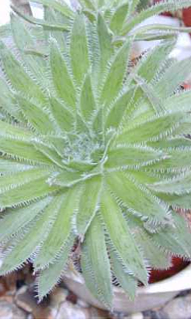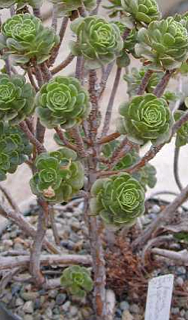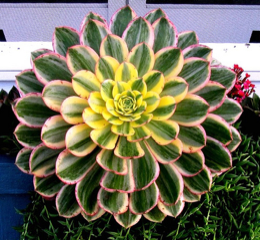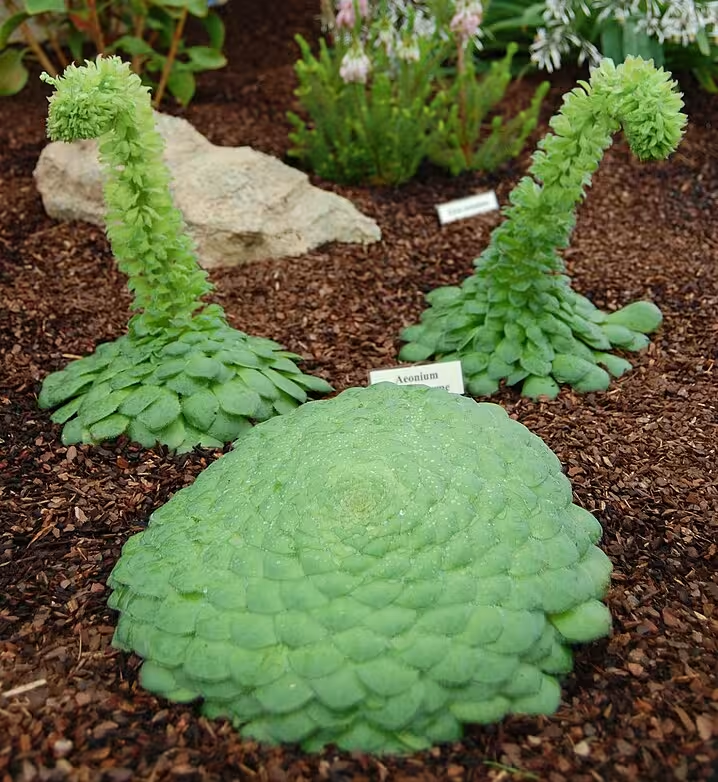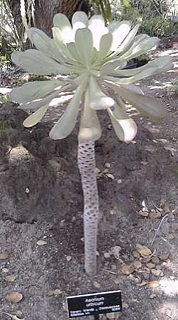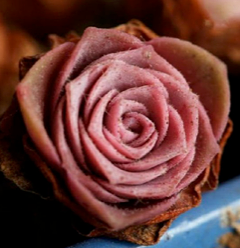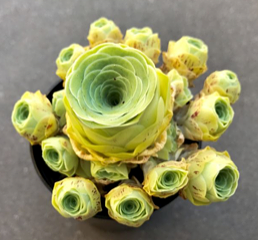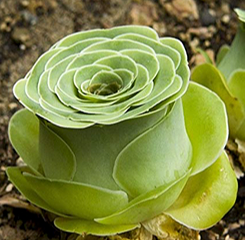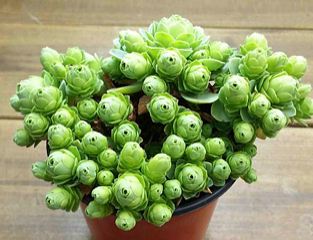Submitted by: Jim Tanner and Maria Capaldo
Aeonium are members of the family Crassulaceae. Most species are native to one of three different Macaronesian archipelagos (the Canary Islands, Madeira, or Cape Verde) but are also found in Morocco, East Africa (Ethiopia, Somalia, Uganda, Tanzania and Kenya) and Yemen. They are characterized by thin-leaved succulent rosettes which gradually taper into a leafless stem. Some species may have showy markings in the form of dark tannic stripes on the underside of the leaves. A few species have sticky leaves with a rather unappealing odor caused by small specialized leaf hairs, thought to reduce the rate of transpiration. Many species have small teeth along the leaf margins.
To find the right growing conditions for an Aeonium, it can be important to know its habitat origin. Generally Aeoniums thrive outdoors in a Mediterranean climate similar to the Canary Islands preferring mild temperatures (not tolerant of over 40 degree C. heat). However, the three Aeoniums found in the more tropical areas of East Africa from Yemen to Ethiopia, A. leucoblepharum, A.stuessiyi and A. gorgoneum, will tolerate both high heat and humidity. Aeoniums in the higher altitudes (A.simsii, A. spathulatum and A. smithii) will tolerate brief periods of mild frost.
The flowering influorescence grows from the center of the rosette with multiple usually yellow showy flowers, although a few species have white flowers or pinkish variegation in the flowers. Each rosette dies after blooming and setting seeds. In some species, since the plant will not produce any offsets or side rosettes, it will die completely after blooming. These species are propagated by seeds.
Most species are fall and spring growers, and should be watered and fed regularly at these periods. Fall is also a good time for rooting cuttings and transplanting. As the plants age, they will get leggy and it is best to cut and replant the terminal rosettes to prevent the plant from reaching the size at which it will bloom. Hybrids and variegated cultivars are common and add great color to any garden.
Greenovia, a small genus composed of four species has now been moved to Aeonium. They are native to the Canary Islands where they grow in the hills between 500 and 7500 feet elevation (150 to 2300 m). They grow on dry volcanic slopes, sometimes in the shade. Their leaves form succulent rosettes that close during periods of drought. They occasionally have a short stem.
They bloom in the spring and have yellow flowers and most species die after blooming.
Propagation is by seeds, offsets for the plants that produce them, or leaf cuttings.
LATIN LOOKUP – Loquerisne Latine (Do you speak Latin)?
The meanings of latin plant names on this page – from http://davesgarden.com/guides/botanary/
- Aeonium [ee-OH-nee-um]
An ancient name used by Dioscorides for one of the species in the genus. - aizoon [AY-zoon]
Evergreen. - arboreum [ar-BOR-ee-um]
Tree-like. - aurea [AW-re-uh]
Golden flower. - davidbramwellii [day-vid-bram-WEL-ee-eye]
For 20th century British botanist Dr. David Bramwell. - diplocycla [dy-plo-SY-kla]
From the Greek diploos (double) and cyclos (circular, wheel). - Greenovia [green-OH-vee-uh]
Named for 19th century English geologist George Bellas Greenough. - haworthii [hay-WOR-thee-eye]
Named for Adrian Hardy Haworth, 19th century British botanist. - leucoblepharum [loo-koh-BLEF-ah-rum]
From the Greek leukos (white) and blepharis (eyelash); for the thin white leaf margins. - lindleyi [LIND-lee-eye]
Named for John Lindley, 18th century British botanist and taxonomist; professor of botany in London University. - sedifolium [sed-ih-FOH-lee-um]
With fleshy foliage. - simsii [SIM-see-eye]
For 19th century British physician and botanist Dr. John Sims. - spathulatum [spath-yoo-LAY-tum]
With a small spathe. - tabuliforme [tab-yoo-LEE-form-ee]
Formed like a tablet, flat shaped; also spelled tabulaeforme. - urbicum [UR-bee-kum]
Urban (belonging to cities or towns). - variegata [var-ee-GAY-tuh]
Variegated.
